If you’re looking to add some greenery to your home aquarium, Java moss can be a great addition.
It’s a hardy plant that does well with a wide variety of fish, other plants, and is very forgiving to a range of different water temperatures and parameters, making this an idea plant for beginners.
It is one of the best beginner-friendly plants and mosses. Even if you’ve never maintained a live-planted tank before, you can have success with this plant.
In this article, we’ll go over all the information you need to grow and care for the wonderful Java moss.
Successful Java moss care begins with a great tank set up. If you want to know where to start to end up with the healthiest plants possible, keep on reading, as we’re going to cover everything you need to know to grow this plant successfully.
Overview and Statistics
In the following table, you’ll find a summary of the most helpful information regarding care needs.
| Characteristic | Details |
|---|---|
| Common name(s): | Java moss, Brazil moss, mini moss, Singapore moss, willow moss |
| Scientific Name(s): | Taxiphyllum barbieri |
| Family: | Hypnaceae |
| Origin: | South Asia |
| Color Form: | Green |
| Maximum Size: | 4 inches |
| Growth Rate: | Slow |
| Care Level: | Easy |
| Water Conditions: | Freshwater, 72-82° F, KH 3-8, pH 6.0-7.5 |
| Lighting: | Low |
| Minimum Tank Size: | 5 gallons |
| Supplements: | Fertilize for better growth |
| Placement: | Foreground/Carpet |
| Propagation: | Division |
| Tank mates / Compatibility: | Extremely hardy, this plant does well with most fish and other plants. |
Java moss is a great aquarium plant that’s well-loved by hobbyists and popular for home aquariums. It does well in a variety of setups and is excellent for aquascaping.
Originally from Asia, it is easy to propagate and difficult to kill. It provides great visual appeal while providing fish with plenty of coverage. It doesn’t need much light and grows quickly in colder waters.
It will grow wherever it happens to be. It doesn’t even need to be affixed to anything and will grow free floating in your tank. Although, if you would like to attach it to specific areas, this can be easily achieved.
A little bit of Java moss can go a long way. If you haven’t yet tried it in your home aquarium, you may be surprised how effortless it is to work with—and how much it can add to your aquarium.
Appearance
It has a delicate appearance. Its small stems are branched with overlapping oval leaves. There’s no regularity to the length or shape of the stems. One plant has the potential to look vastly different than the next, depending on how it’s grown and what it’s growing on.
This moss does not need to be affixed and does not receive nutrients from a root system as many other plants do. Instead, Java moss absorbs its nutrients from the water, through its leaves.
A lovely, vibrant green, it is a striking and hardy addition to your tank. You may choose to carefully cultivate it to hide an aquarium fixture, or let it free float to serve as a breeding ground. Either way, it can add great appeal to your tank.
Placement in a Tank
It does well when planted in the foreground. It can, however, be trained to cover or hide equipment and items in your tank. It can also be used in carpet fashion, to cover the bottom of your aquarium.
This is a favorite plant of those who enjoy aquascaping. Training Java moss is straightforward. Simply attach your plant to where you would like it to grow.
If you have an item in mind—like a rock or a tree—merely attach your moss directly to the object in question using a piece of cotton string. Once the plant has become established—give it a week or two to get situated in its new spot—then go ahead and remove the string.
If you’re looking to create a cover or a carpet, use a piece of mesh. Tie it to the mesh. Arrange it so it’s encouraged to grow through and around the mesh. Before long you’ll have a covered piece of mesh you can easily move around and remove for cleaning.
A word of caution: while it’s great for hiding a less-than-attractive filter, you will need to monitor and maintain it closely. If you don’t regularly trim it, you may find it grows into the filter’s inlet and motor, then impede its function.
The Benefits of Adding Java Moss to Your Tank
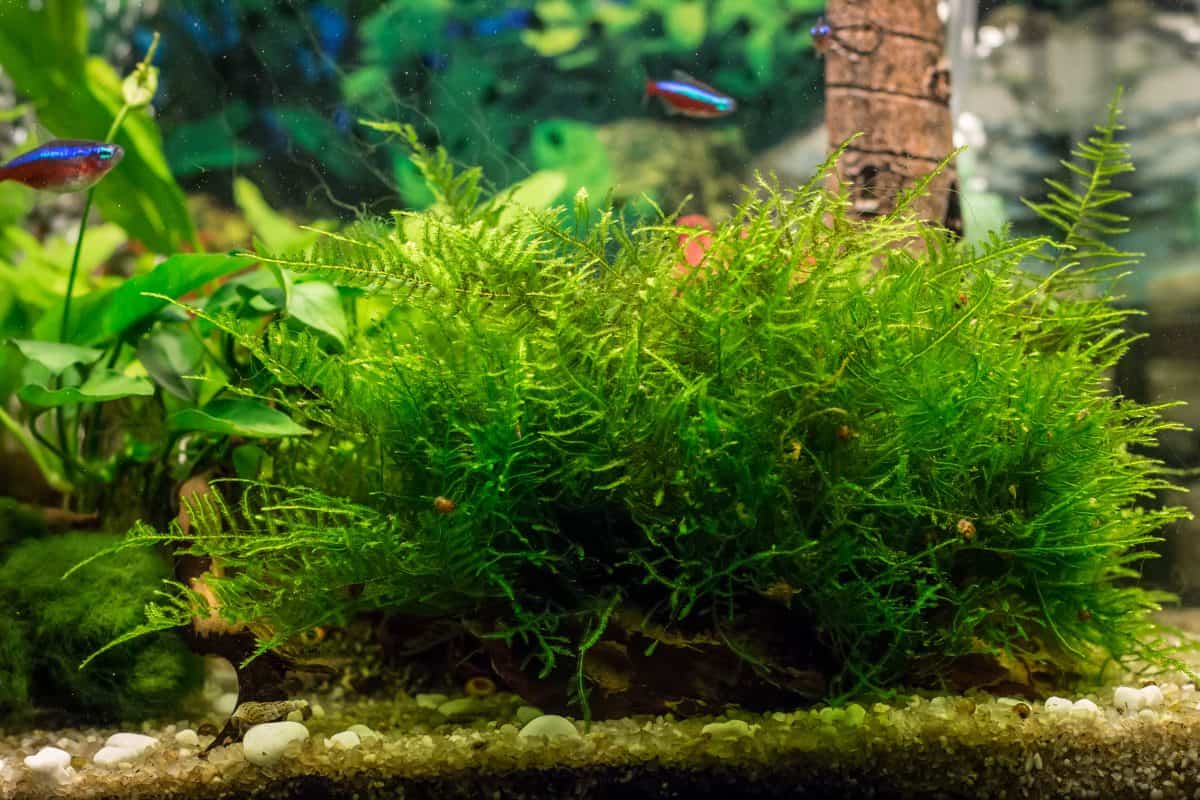
Do you have a low-light tank, one with voracious and aggressive fish, or one that is otherwise difficult to grow live plants in? Java moss might be the answer you’re looking for, it’s a great low light, easy to grow plant.
Not only does it provide visual interest to your tank, but it’s also highly functional as well. In a community tank, it offers hiding places for smaller aquarium fish. In a breeding tank, it can serve a similar purpose when it comes to protecting young fry.
It’s also capable of floating unattached to anything. This can make it a great addition for bubble nest builders looking for a safe space to spawn. Microscopic infusoria also love Java moss, making it a great food source for young fish.
Tank Requirements and Preferred Conditions
It is an aquatic plant native to South Asia. It does well in all kinds of waters, even those that are brackish, though prefers freshwater aquariums.
It has no preferred substrate and can thrive in cold as well as warm waters. It doesn’t need large quantities of light or a lot of room to grow.
Although it can do well in a wide range of conditions, let’s take a look at its minimum needs and what it’s optimal conditions are.
Minimum Size Tank Required
It will grow in any size tank. While it doesn’t grow very tall, you may find it will propagate beyond what a small tank can safely sustain.
If you monitor your plant closely, you may have success with it in as little as five gallons. The larger your tank and the more fish you have, the higher the amount of Java moss you can plan on maintaining.
So with this in mind, 5 gallons is the smallest tank size you should have before introducing this plant, but as always, bigger Is better!
Water Type and Parameters
For water conditions, it’s best suited to fresh water, though it can grow in brackish water as well. It does best in waters kept between 72 and 82 degrees fahrenheit. Your plant will propagate more quickly in the cooler temperature range.
For optimal care and growth, plan on keeping the KH between 3 and 8 and the pH between 6.0 and 7.5.
It thrives with regular cleanings and plenty of circulation in the tank water because it takes it nutrients from the water itself, not a substrate, so it must have the water it comes in contact with refreshed continuously.
Therefore, a strong filtration system that encourages great circulation in your aquarium will help your Java moss look its best.
Lighting Requirements
It requires very little light to grow. This makes it an excellent option for fish with low light needs.
That being said, the moss will grow more quickly when exposed to greater amounts of light.
The danger with exposing your Java moss to too much light is it will simultaneously encourage algae growth. Once infested with algae, it can be incredibly difficult to get it algae-free once more.
Substrate Requirements
There is no required substrate to grow Java moss successfully. It’s happy free-floating, growing on the bottom of the tank, or cultivated to grow on or over objects in the tank.
Due to this, it’s highly versatile and does well in a wide variety of substrates and aquarium setups.
Growth Rate
It is a relatively slow-growing species. It is hardy, though, and once it’s established, it will happily continue to grow.
To encourage it to grow more quickly, keep it in cooler waters and expose it to a greater amount of light. You can also add fertilizer to help encourage growth.
Keep in mind that it absorbs nutrients and fertilizer from the water around it instead of through its root system. You will need to plan on treating the water itself with a liquid fertilizer, instead of the substrate where the roots are located.
Care Tips to Grow Java Moss
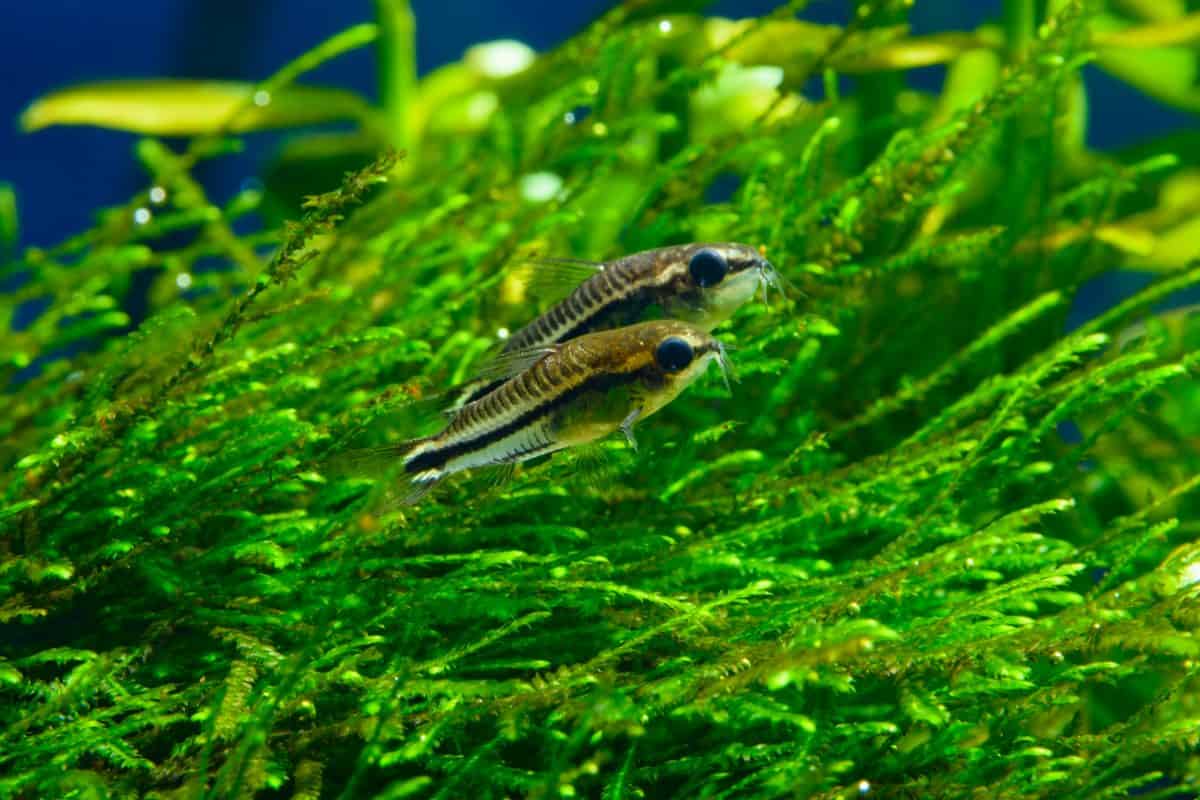
It will do best in a well-filtered tank. Clean water will help keep algae in check. Algae is the biggest threat as it can be nearly impossible to eradicate once it starts to grow.
The moss may also collect dirt and debris when kept at the bottom of your tank. For best results, clean your tank weekly. If your Java moss is carpeted or easy to remove, you may do so and rinse thoroughly with fresh water.
You can include vacuuming with a device designed for use in an aquarium as part of your care routine. If you do find it has become infested with algae, you may have no recourse but to cull it from your tank. Clean your tank thoroughly to make sure there is no algae present and begin again with fresh, algae-free, plants.
To keep your Java moss orderly, simply trim it with a pair of scissors. You may trim it back as much as you want without fear of killing it. In fact, good trimmings may encourage continued growth.
If you prefer the look of wild and unchecked growth, that’s certainly an option as well. Trimming is not required to keep your plant healthy, it just makes it look somewhat neater.
Purchasing Advice
It’s one of the most sought after and purchased plants for home aquariums. It’s readily available for purchase at most fish supply sources.
You can expect to pay about 15 dollars for a single plant. When shopping for plants, look for their trademark vibrancy and rich green color. Any browning or yellowing can indicate the plant isn’t healthy. Of course, avoid anything that has algae growth already established.
If you cannot source your Java moss locally, you may purchase it online and have it delivered to you through the mail. However, to avoid it dying in transit, you’re advised not to order online during extreme weather conditions (hot or cold).
How to Add it to Your Tank
Adding it to your tank is pretty straightforward. If you would like your plant to float freely, simply place it in the water. Be aware that these plants are frequently grown in nurseries out of the water, so there may be an adjustment period for your plant.
If you have a specific area where you would like your Java moss to grow, tie it in place. Cotton string is great for attaching your plants. Just make sure it’s untreated so it doesn’t leach any chemicals into your tank. Once your plant is established, feel free to remove the string.
Tank Mates and Compatibility
Java moss is compatible with most fish. It is extremely hardy and can resist rough fish and those that like to munch on aquarium plants. It’s well loved by those who keep shrimp as well.
This is a great choice for livebearers as well as bubble nest builders, as it provides a great space for young fry to seek protection. It’s also a good source for infusoria and is a favorite for breeding tanks.
Propagation and Reproduction
It’s easily propagated by division. All you need to do is separate the plant into smaller chunks and allow it the time it needs to become established in its new location.
For best results, don’t break it into very small pieces—larger clumps will establish better and more quickly.
When propagating, it’s best to do so at cooler temperatures. This encourages plant growth and can help your Java moss become established more quickly.
Interesting Facts
- Though originally from Southeast Asia, it has become invasive and classed as a pest in some tropical locations.
- It has recently been reclassified, and there’s some controversy over whether it was the right thing to do!
- It has no real root system. Instead, thin rhizoids—root-like growths— keep it firmly attached to its location.
- Fish waste can help provide the fertilizer to keep your Java moss happy.
- It gets its name from Java Island.
Summary
If you’ve been wanting to venture into the world of live aquarium plants, but have been nervous to take the leap, this may be the plant you’ve been waiting for.
If you’re an advanced hobbyist who’s kept plants for years and are ready to get into sophisticated aquascaping—well, this might be the plant you’re looking for too!
Java moss is not just attractive, it’s helpful to have in your tank. It’s incredibly easy to take care of and practically impossible to kill. It’s care is simple—just keep that algae growth in check and your tank clean, and you can enjoy this plant for a long time to come.
What do you think of Java moss? What do you love and what do you wish was different? We’d love to hear about your experience and any tips you can share—leave us a comment below.
Happy fish keeping!

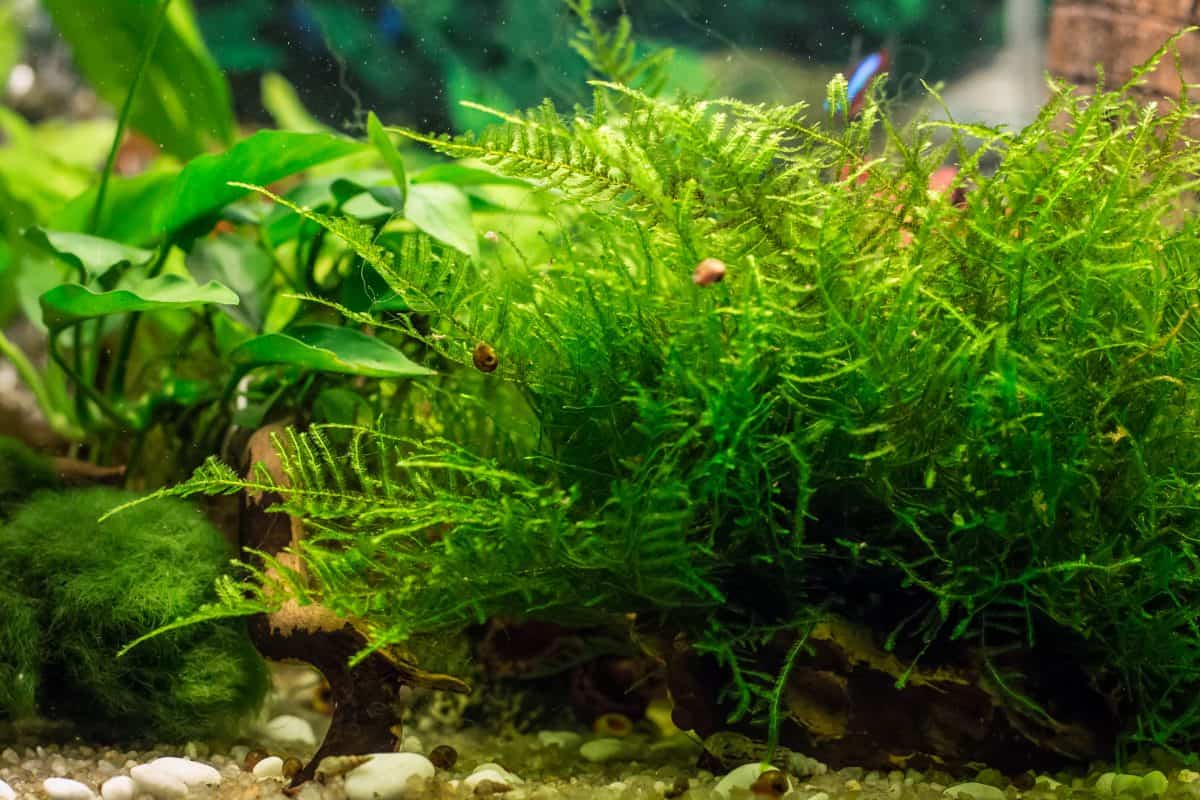
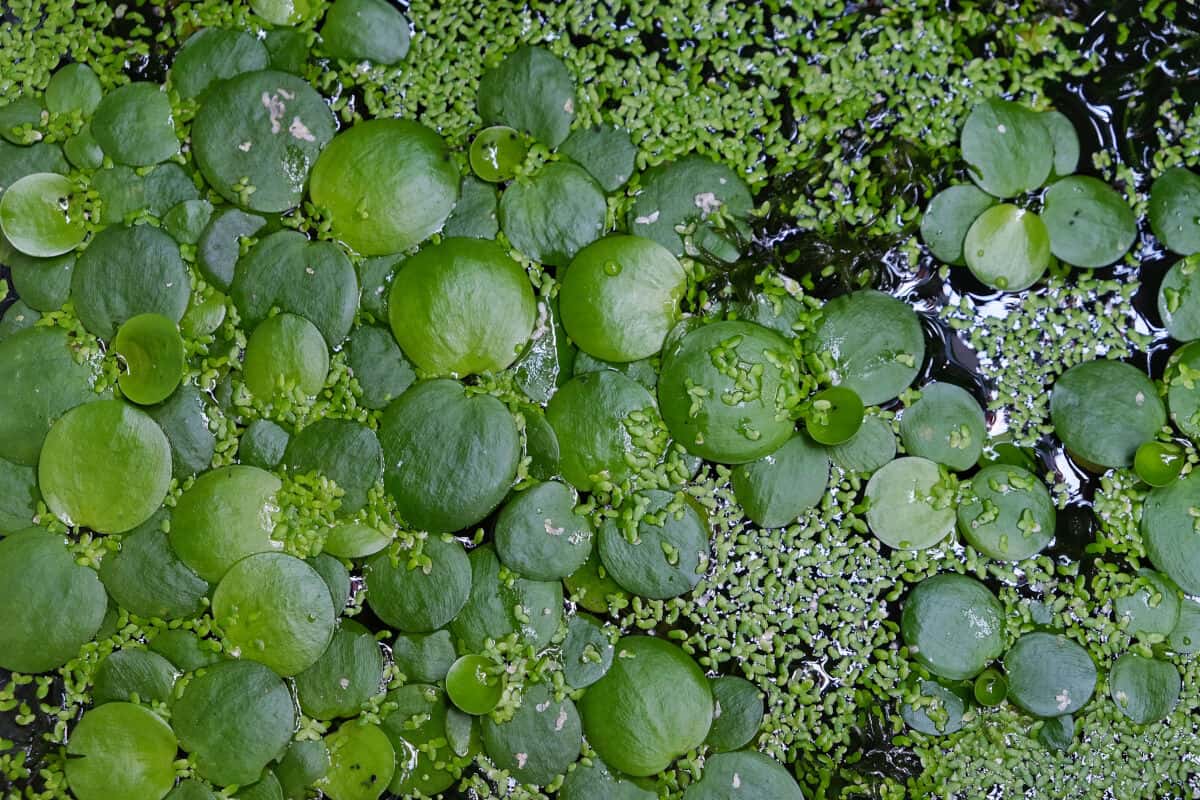
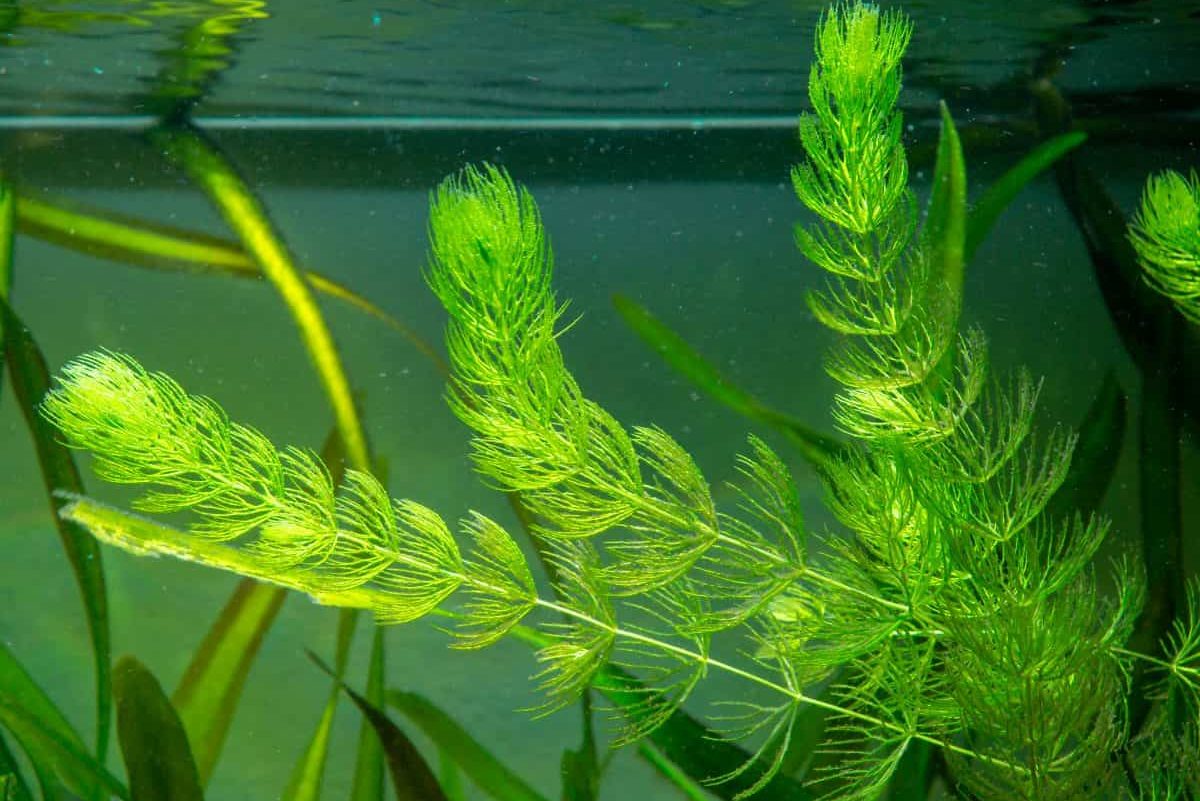
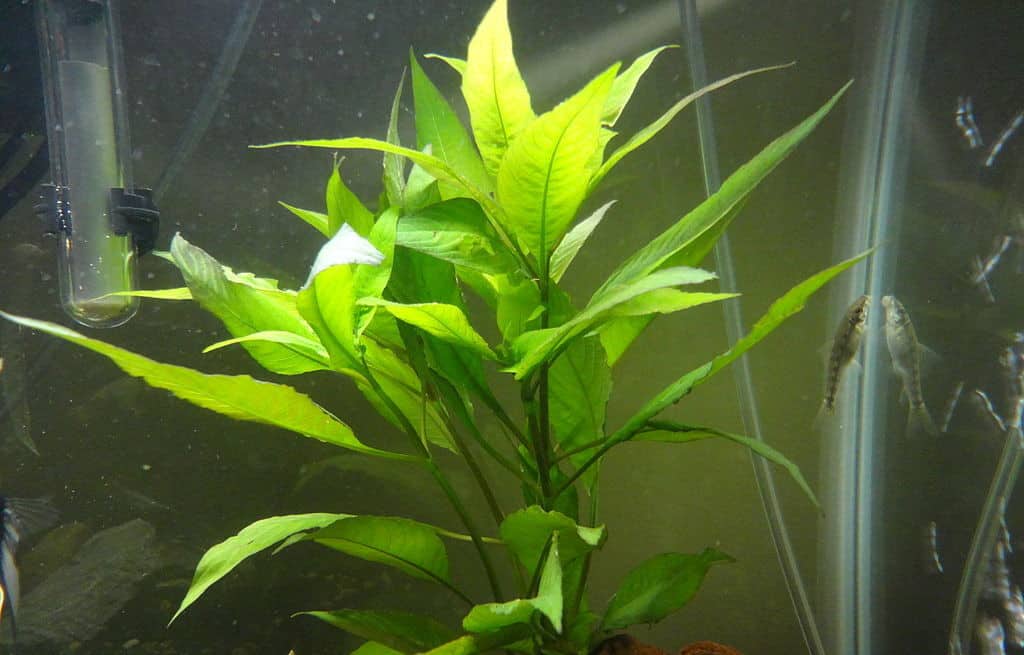
Very informative and interesting. Although no mention of growing the moss from seed .Thanks for your help